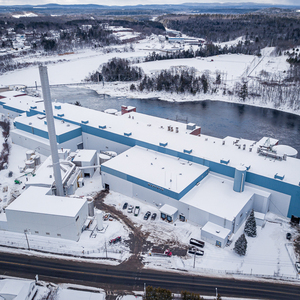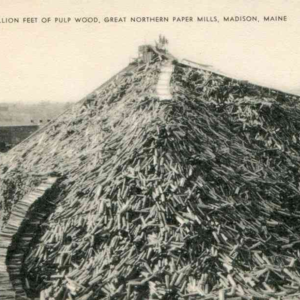
Since moving back to Connecticut 10 months ago, and taking a project manager position with BPC Green Builders, I’ve been working on a single-family residence in southern New England. It was designed by Pennsylvania architect Richard Pedranti. I carry a certain level of professional pride in the fact that I’ve been able to build many high-performance envelopes—the ones industry pros are familiar with. This one was something different. I had seen aspects of these assemblies in circles of people who fetishize European methods, as well as in the world of panelization. I’ll try to explain what we built and why, as well as share some of what I learned along the way.
The foundation and floor system
The house sits on a combination of full basement and a conditioned crawlspace. Sub-slab insulation is approx 18 in. of Aero Aggregate foamed glass topped with a Stego vapor barrier turned up the wall. The stem walls sit on a fluid-applied capillary break and the exterior is waterproofed with a fluid-applied system. Wall insulation is a combination of 2 in. of HFO-blown closed-cell foam and a 2×4 framed wall with Rockwool. These below-grade details are relatively standard high-performance methods. It’s the above-grade detailing that is less conventional.
The trussed floor system sits on a PT plate with Conservation Technology gasket between it and the foundation for air sealing at that critical joint. I’ve used gaskets on many occasions but in recent years have trended away from them. If conditions are right, they work well but conditions have to be right. If the top of the foundation is too rough or is out of level, which is common, then the gaskets’ performance can be compromised. That was the case here—one inside corner of the wall dropped by 3/8 in. to 1/2 in. over…
Weekly Newsletter
Get building science and energy efficiency advice, plus special offers, in your inbox.

This article is only available to GBA Prime Members
Sign up for a free trial and get instant access to this article as well as GBA’s complete library of premium articles and construction details.
Start Free TrialAlready a member? Log in















11 Comments
Thanks for the great details.
Am I reading right that you cut and cobbled the Steico into the cavities prior to the continuous exterior sheet? If so, was there a particular reason to do that rather than use another more traditional cavity fill?
The Steico served as the WRB?
Cavities received dense pack cellulose and yes, the Steico serves as the WRB. That’s a detail I was dubious of before working hands in with the product but name am comfortable with.
Interesting build. Ben's last paragraph sounds a bit equivocal about what he thought about the whole thing. I can see why he might.
I'm not sure what the plywood sheathing brings when it is installed on the interior that some other form of bracing wouldn't. Moving it there means it isn't continuous from foundation to the top-chords of the trusses, making it much less effective as a shear diaphragm, and much more difficult to use as the primary air-barrier.
Ben didn't mention whether the walls were also getting an interior service cavity. If not the sheathing would need to be cut at all electrical and plumbing penetrations, much as drywall is, and roughing In the services on the exterior walls would be a lot more difficult.
Think the interior plywood was also air/vapor barrier, and pretty sure there was a service cavity too.
Hi - I'm curious about how the shear ply can transfer load to the foundation if it is applied on the interior. Often engineers (I am seismic zone D) need it to be fastened to the sill on the concrete. I've had one engineer tell me that if it's fastened to the wall bottom plate, which is adequately fastened to the floor which is adequately fastened to the PT sill, which is bolted to the concrete is fine and another tell me it is not acceptable.
Thanks!
Lindsay,
If you used interior sheathing in a high seismic zone you could compensate by mechanically fastening the bottom plate of the wall to the foundation. An engineer might call out something like threaded bars epoxied into the concrete with square seismic washers on the top. From my view point that's a lot of gymnastics for little gain.
Stepping back a bit:
Exterior sheathing evolved as a part of wood platform framing for a few reasons.
- It helps not only with shear, but aids in distributing vertical loads.
- It provides a substrate for various claddings.
- And most fundamentally, it encloses the shell of the structure.
Fast forward to the present when we find that with the evolution of better air-sealing and higher levels of insulation sheathing can suffer from moisture problems. I'm not sure it makes much sense to react to this by trying to protect the sheathing by moving it to somewhere it isn't as appropriate to be. Much better would be to address the problem by either using different materials, or designing the walls so that the exterior sheathing isn't at risk.
I don't doubt that interior sheathing is more gymnastic than exterior sheathing, but on your bulleted points:
-"It helps not only with shear, but aids in distributing vertical loads." How does exterior sheathing do this any better/differently than interior, besides the shear continuity issue with the sill plate? If one alternative to this assembly is diagonal bracing, surely there is even less vertical distribution of loads than interior sheathing.
-"It provides a substrate for various claddings." True, but this becomes moot with many ext. insulation/rainscreen assemblies anyways.
-"And most fundamentally, it encloses the shell of the structure." Are you referring to the ability to get the structure dried in more quickly?
I'm not fundamentally disagreeing with your assessment but rather am trying to understand the finer points, because from a hygrothermal standpoint sheathing on the interior seems to make some good sense.
Tyler,
I don't think interior sheathing inherently involves more structural gymnastics. They come from having to adapt it to seismic retirements in places like Lindsay and I live. It does however make a lot of tasks, like running services, insulating the stud bays, or even standing and securing the walls more difficult.
My bullet points are about why sheathing became part of wood frame construction and what it adds, not a comparison of interior vs exterior locations. However to pick up on a few of your comments:
- There is a big difference between trying to install rain-screen furring, cladding, trim, flashing and foam on a sheathed wall. All of those can be fastened directly to the sheathing. It is only furring over foam that requires going back to the studs. During construction simple tasks like applying a sheet WRB, or working on the subsequent layers also become much more involved as you can't place ladders against the wall. I've just gone through that on two small industrial shops I built with no sheathing. It added a lot of complexity.
- It's not just the ability to get to lock-up (although this has real implications for everything from the timing of construction loan draws to being able to leave your tools on-site). I think it's more fundamental. The exterior sheathing is a continuous layer that defines the barrier for everything from the control layers, to excluding pests. It's the framed shell to which you add things, stand on. lean against, etc. It evolved as an integral part of platform framing. If for some reason it no longer makes sense to include it on the outside of buildings, it begs the question as to why it makes sense located somewhere else?
Thanks for the thoughts Malcolm. Not having built a structure with interior sheathing (& without exterior) myself, it's hard to fully grasp all the practical differences. I'm sure building one would be the surest way to intuitively understand it's pluses and minuses.
I wonder if where a lack of exterior sheathing may really shine (or not be a big bother) is with panelized type construction (in really cold climates). Another topic unto itself.
I also wonder if to some small degree rigid wood fiber doesn't change the equation given that:
1) It can act as the wrb,
2) It's fairly rigid, has T&G edges, and is easy to cut (not rigid enough to put a ladder against maybe but not a bag of fluff...)
3) I assume it can be blown against without issue (?) given that is what Ben did here.
[All of this assumes comparison to a wall with foam exterior to the sheathing (arguably a wall where the sheathing is no longer truly 'on the exterior' anyways); not just a rainscreen without foam.]
Then again most steps would likely still be made easier if there was a rigid exterior shell (sheathing) as you say, especially given that is how the industry is geared.
Tyler,
I've thought about eliminating exterior sheathing a lot since Lucas Durand's 2011 discussion of Thorsten Chlupp's Sunrise house. https://www.greenbuildingadvisor.com/question/the-sunrise-home
I like the idea of framing and sheathing the house conventionally, then adding whatever secondary layer of improved insulation you need to the outside. The problem I can't get past is once you move from rigid insulation to either another stud wall or Larson trusses, dealing with the lack of exterior sheathing- or adding another layer - making the interior one largely redundant.
Two things have slowed my interest in it. The first is the it appears that there are good ways to keep exterior sheathing from moisture damage even on very thick walls. The second is that I build in a climate where the return on any insulation beyond that you can c0ntain in a 2"x6" wall is very small and the effort better spent elsewhere.
The emergence or exterior wood based insulation rigid enough to act as sheathing and backing would be a game-changer that would make most of this discussion redundant. I hope it happens soon.
Sonoclimate Ecos4 does this to a certain extent. I don't know if testing has been done for Seismic Zone D but I know of projects that have used it in both Ontario & Salt Lake City. I don't know if this product can be used as a WRB, like Steico & Gutex can.
Log in or become a member to post a comment.
Sign up Log in